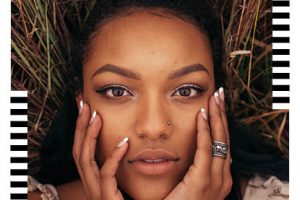Why do we crave drastic hair changes when things go wrong?

It’s an overused film trope, and for good reason: who among us hasn’t impulsively gone blonde, cut their own bangs, or chopped off several inches of hair to move past a difficult moment? As Coco Chanel famously said, “A woman who cuts her hair is about to change her life,” and it seems that the world has taken that to heart.
Throughout history, women have changed their appearances to handle trauma–anything from a breakup, to job loss, to the death of a loved one. It’s a powerful statement to both oneself and the world, as even slight changes to hair can dramatically affect how someone is perceived–a type of signal to friends and family that something has happened.
So then, why is stress such a motivator for us to change our hair?
Realistically, a £10 box of hair dye at the chemist’s is more accessible than either therapy or other appearance changes, like a new wardrobe. In under 30 minutes, we can create a completely different ‘self’, whether that’s the Blonde Bombshell or a Buzzcut Beauty.
However, dramatic hair changes have been a part of history for a long time. In the 1920s, defiant women embraced the ultra-short bob as a way of rebelling against conventional standards. After divorcing her husband in 1940, Frida Kahlo lobbed several inches of her hair off.
Even Britney Spears shaved her head in 2007 in the midst of a self-proclaimed mental breakdown, telling MTV in 2008, “I was going through a lot, but it was just kind of like me going through a little bit of rebellion, or feeling free, or shedding stuff that had happened, you know?”
That thought pattern of feeling free and in control of oneself is still a driving force in why women change their hair today. Jess, a scientific researcher in Canada, alters both her hair length and colour–sometimes to fight boredom, and other times to gain a sense of control over her appearance.
“Whenever there are things in my life going on that I feel that I can’t control, it’s a reminder that I can control the way that people see me,” she said. “I think it’s comforting, in a way, to know that everyone I’ve ever met has only seen a fraction of my personality, and I’m the only one who knows how to properly fit all the pieces together.”
As humans, we naturally crave stability–and when things change and we feel lost, making a thoughtful, tangible change can make things easier to handle.
Hayley Wheeler, an emotional empowerment coach, started dyeing her hair when she was 15, and said that it escalated once she began battling depression, nearly 18 years ago.
“I would go through hard dying, where I did it 17 times in two weeks after buying a mistake grey dye, and then when life felt most out of control, it would be 2-3 times a week,” Wheeler said. “For me it was a negative control coping mechanism and gave me short term relief and I was always looking for the next short term reliever, which lead me to dye my hair so often.”
As Wheeler’s mental health improved and her depression waned, she replaced hair dye with coping mechanisms that addressed the main problem–but isn’t opposed to a new colour every now and then, on her own healthy terms.
Whether we do is consciously or subconsciously, it seems that when we change our hair, we do it for ourselves. As much as it seems like a bottle of bright-red dye is a cry for help, more than likely, actually a brave statement: “I’m still here, and I’m still me.” It’s control, it’s change, and it’s fun–all valid reasons to switch things up.
So, if you’re dying to buy that dye or get that side-shave, go for it. But, if you’re craving a change and aren’t quite sure what that change should be, try a new hairstyle or get a trim at the salon. Either way, make sure that you’re making these changes for you and you alone–and maybe an ultra-liked Instagram post. We are human, after all.








